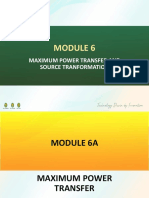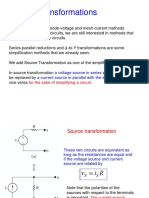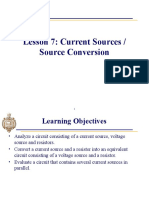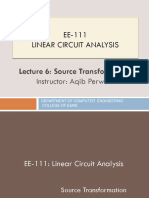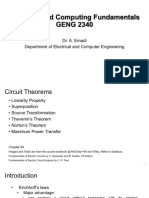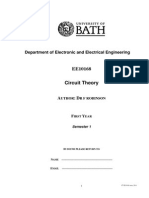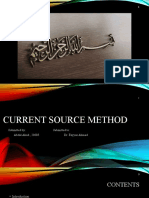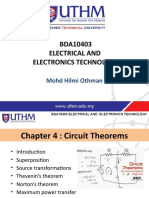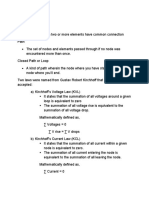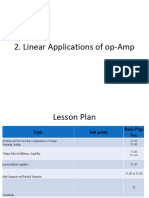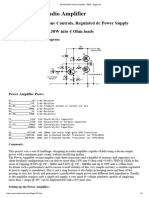0% found this document useful (0 votes)
86 views9 pagesLecture 4 Source Conversion
The document discusses source conversion in DC circuits, focusing on the transformation between voltage and current sources to simplify circuit analysis. It highlights the advantages of using current sources for parallel connections and voltage sources for series connections. The document also includes examples demonstrating the application of source transformation to find circuit parameters.
Uploaded by
zero2accessCopyright
© © All Rights Reserved
We take content rights seriously. If you suspect this is your content, claim it here.
Available Formats
Download as PDF, TXT or read online on Scribd
0% found this document useful (0 votes)
86 views9 pagesLecture 4 Source Conversion
The document discusses source conversion in DC circuits, focusing on the transformation between voltage and current sources to simplify circuit analysis. It highlights the advantages of using current sources for parallel connections and voltage sources for series connections. The document also includes examples demonstrating the application of source transformation to find circuit parameters.
Uploaded by
zero2accessCopyright
© © All Rights Reserved
We take content rights seriously. If you suspect this is your content, claim it here.
Available Formats
Download as PDF, TXT or read online on Scribd
/ 9
